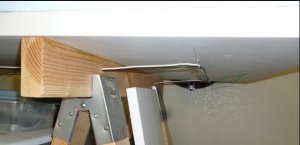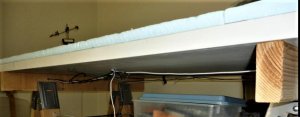You are using an out of date browser. It may not display this or other websites correctly.
You should upgrade or use an alternative browser.
You should upgrade or use an alternative browser.
Getting power to the rails
- Thread starter oplholik
- Start date
Selector
Well-Known Member
I don't know how robust they are. I understand your doubts, but it seems to me that, if they would make your life more pleasant and rewarding in your hobby hours, all it would take is a quick meter check for continuity before moving on to another wire and joiner combo at the next joint. Place one, connect to the bus with a wrap-around bared end, turn on power, and see if you have voltage there. Or even better, do an ohm test with just the terminal joiner on the bench to see if their solder work is holding up and if the wire hasn't broken inside the insulation.
They must have a market that keeps purchasing them and keeps them in inventory. So...............someone is buying them in quantities that mean they're constantly available. They must offer a solution of some kind to some people, and it could be for you. I hope they do.
They must have a market that keeps purchasing them and keeps them in inventory. So...............someone is buying them in quantities that mean they're constantly available. They must offer a solution of some kind to some people, and it could be for you. I hope they do.
Iron Horseman
Well-Known Member
I would say yes on two counts. Yes the wire is awfully small, but Yes they would be satisfactory if you put enough of them in. Many small feeders are probably better than one large one anyway. So the question becomes, "Is adding additional feeders harder than the soldering job?".Just wondering about using the terminal rail joiners for N scale DCC track. The wire looks awfully small, would it be satisfactory? It looks like it would be easier to hook up rather than trying to solder a larger wire to the underside of the N gage track.
Also, FYI, I solder the wires to the side of the rail not the underside. Much easier and pretty easy to hide so they aren't horribly noticeable.
Last edited by a moderator:
goscrewyourselves
I'm the one
Paul,
I have used the "terminal rail joiners" in HO and they do work, so I would assume they would also be adequate in N Scale as well.
The only issue I came across though was if I needed to solder the joiner to the rails. In those case, I found the wires attached to joiner would "de-solder" and fall off. Nothing I did seemed to prevent that from happening.
Because of that issue for me, I went the same way as Horseman and soldered feeders, wire to the outside of the rails using solid wire. I found it quicker, easier to do and more reliable. Additionally, I was able to attach the feeders to the track before laying it so had less obstacles to work around and could have all of my feeders in place and ready for installation.
I guess the final advantage for me was only having to "control" one length of flex track instead of two.
I have used the "terminal rail joiners" in HO and they do work, so I would assume they would also be adequate in N Scale as well.
The only issue I came across though was if I needed to solder the joiner to the rails. In those case, I found the wires attached to joiner would "de-solder" and fall off. Nothing I did seemed to prevent that from happening.
Because of that issue for me, I went the same way as Horseman and soldered feeders, wire to the outside of the rails using solid wire. I found it quicker, easier to do and more reliable. Additionally, I was able to attach the feeders to the track before laying it so had less obstacles to work around and could have all of my feeders in place and ready for installation.
I guess the final advantage for me was only having to "control" one length of flex track instead of two.
goscrewyourselves
I'm the one
Looks good Olie, and IS good if you get power 



